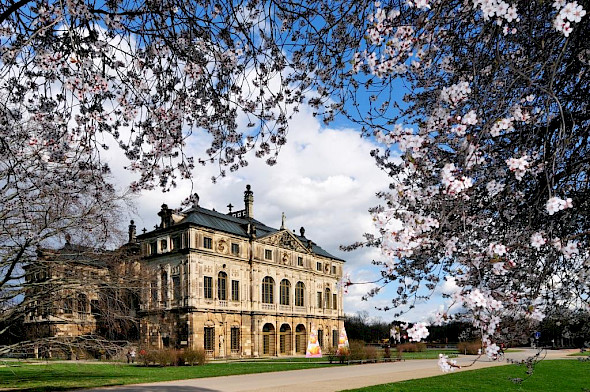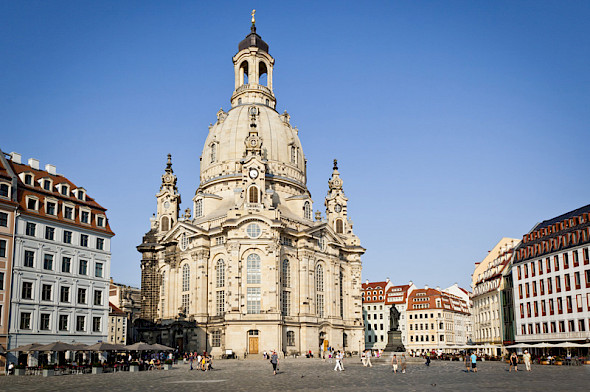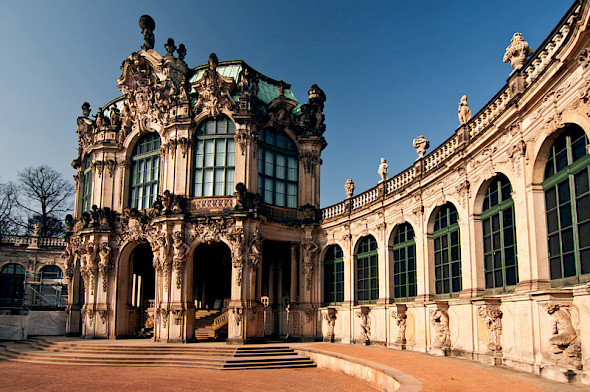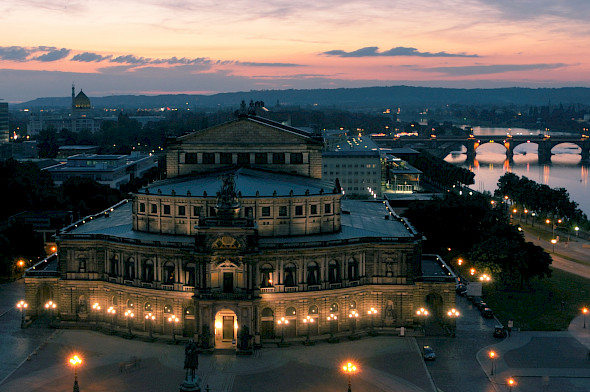Founded in 1206 Dresden
State capital

Dresden is the capital of Saxony and home to the Saxon government and parliament.
With a population of about 530,000 it is among the 10 fastest growing German cities.
Founded in 1206, Dresden flourished during the past 800 years and is considered one of the most beautiful cities in Germany. Due to its location on the banks of the Elbe River, its baroque architecture and famous art collections Dresden is very often referred to as “Florence on the Elbe”. It used to be the capital and residence of the Saxon electors and kings. The most famous of them, Friedrich August I (1750-1827), who was also king of Poland, gathered prominent European artists at his court and made Dresden a leading European city of culture and art.
The city suffered heavy destruction in World War II. In the post-war period until the reunification of Germany in 1990, Dresden was a major industrial and scientific center of former East Germany. During this time many historic buildings were rebuilt (Opera House, Zwinger Palace etc.) but a number of historic buildings was also raised to make room for the modern “socialist” style. Since 1990, Dresden has regained importance as a cultural and economic center in Germany and Europe. The reconstruction of outstanding buildings like the Dresden Frauenkirche in 2005, the Royal Residences and others significantly added to restore the artistic splendor of the past. The urban renewal process is continuing, including both, historic reconstruction, and modern architecture. Dresden has about 13,000 listed cultural monuments and 8 districts under general preservation orders.
Besides culture and art, Dresden has also a sound industrial landscape and a well-developed scientific infrastructure. There are 3 sectors dominating the cities industry: semiconductor industry, pharmaceutical industry and mechanical/electrical engineering.
Frauenkirche

(Church of Our Lady, Lutheran). The original baroque church was built between 1726 and 1743 featuring a 96 m-high dome (one of the greatest in Europe). After destruction in WWII, the ruins served as an anti-war memorial. After the reunification of Germany it was rebuilt, as far as possible, using original materials and plans and financed by an unprecedented fund raising campaign. It was completed in 2005 and became a symbol of reconciliation of former enemies.
Zwinger

(Zwinger Palace)
It was built between 1710 and 1728 in rococo style on the old fortifications of the city. The court used it as orangery, exhibition gallery and library. Later it housed the royal art collections. The Zwinger was destroyed in WWII and rebuild immediately after the war. Today it is a museum complex accommodating the “Old Masters Picture Gallery” and various collections (china, mathematical & physical instruments, arms & armory etc.).
Semperoper

(Opera House named after its architect Gottfried Semper)
The first Royal Opera House, built between 1838 and 1841, was destroyed by a fire in 1869. The reconstruction was supervised by Semper’s son Manfred using his father’s plans. Gottfried was in exile at this time due to his participation in the revolution in 1849. Both houses witnessed premieres of works by Richard Wagner, Richard Straus et al. After being largely destroyed during WWII, the opera house was restored and reopened exactly 40 years after the day of its destruction, on 13 February 1985.